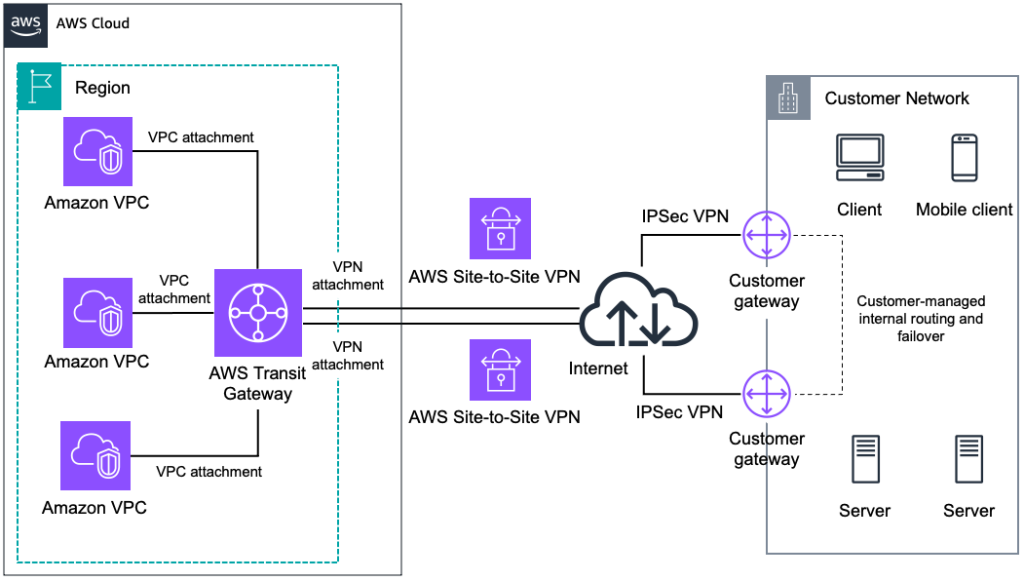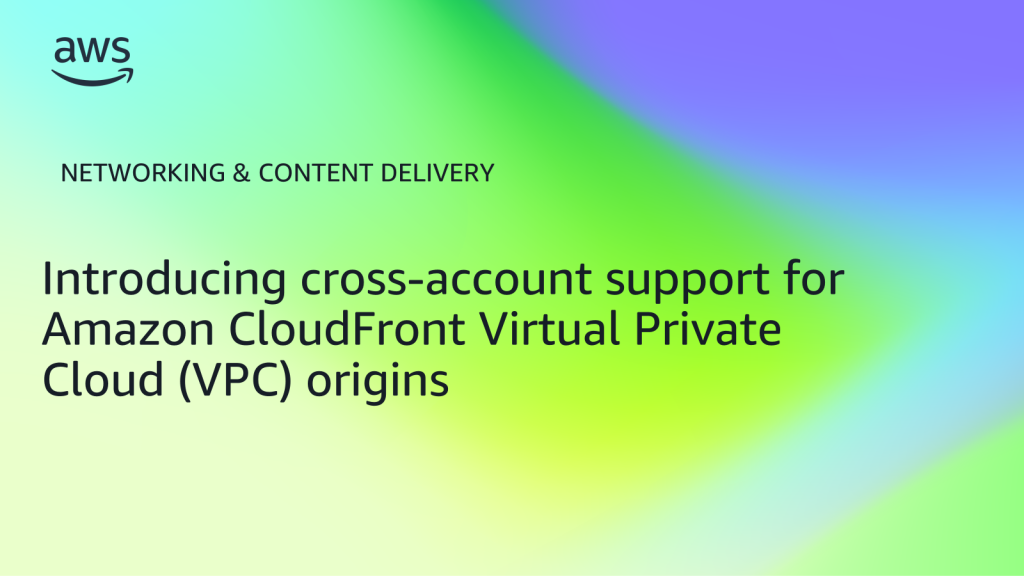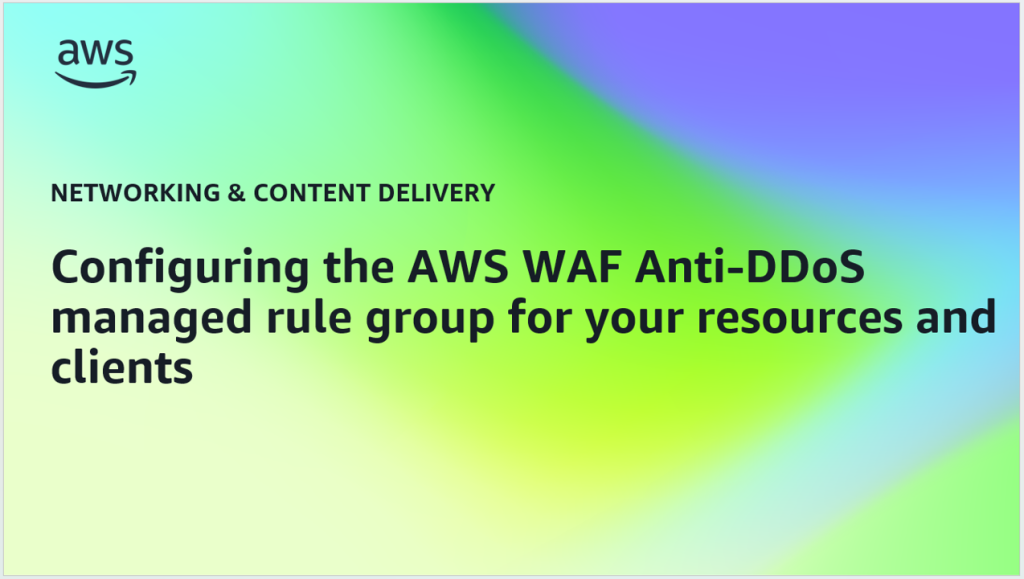Networking & Content Delivery
Introducing AWS Site-to-Site VPN 5 Gbps Tunnels to support high throughput workloads
AWS Site-to-Site VPN now supports VPN connections with up to 5 Gbps bandwidth per tunnel, a 4x improvement from existing limit of 1.25 Gbps. This increased bandwidth benefits customers who require high-capacity connections for bandwidth-intensive hybrid applications, big data migrations, and disaster recovery architectures. AWS Site-to-Site VPN is a fully managed service that allows you […]
Use Amazon VPC Lattice to streamline and secure TCP resource connectivity across multiple AWS Accounts
This guide demonstrates how to use Amazon VPC Lattice to establish secure TCP resource connectivity across multiple AWS accounts in an Amazon Web Services (AWS) Organizations environment. We show how to create a service network in a centralized networking account and share it with other accounts to enable secure cross-account database access. Prerequisites For this […]
Custom domain names for VPC Lattice resources
Amazon VPC Lattice is a fully managed application networking service that lets you connect, secure, and monitor communication between your services and resources within and across VPCs and accounts. Today, we announce custom domain names for Lattice resources. In this post, we will examine this feature in detail. Resource owners can now specify an Fully […]
Introducing cross-account support for Amazon CloudFront Virtual Private Cloud (VPC) origins
In November 2024, Amazon CloudFront introduced CloudFront Virtual Private Cloud (VPC) origins, a security feature that allowed customers to deliver content from applications hosted in private subnets. In addition, we are now introducing cross-account support for Amazon CloudFront VPC origins, enabling network traffic flow between Amazon CloudFront and Application Load Balancers (ALBs), Network Load Balancers […]
Configuring the AWS WAF Anti-DDoS managed rule group for your resources and clients
Users wanting to protect themselves from Layer 7 (HTTP) DDoS threats can use the AWS WAF L7 Anti-DDoS managed rule group to detect and mitigate DDoS events in single digit seconds. The Anti-DDoS managed rule group has a default configuration that is appropriate for many applications and clients. However, there are clients that need special […]
Streamline in-place application upgrades with Amazon VPC Lattice
Introduction In this post, we review how you can perform in-place application upgrades using Amazon VPC Lattice, while maintaining system reliability, security, and performance. Whether you are upgrading a classic three-tier web application, migrating from Amazon Elastic Compute Cloud (Amazon EC2) to containers, or managing periodic Kubernetes upgrades, one challenge remains consistent: making sure of […]
Charting the life of an Amazon CloudFront request
Amazon CloudFront is a native AWS Content Delivery Network (CDN) service. CDNs provide web acceleration by using a worldwide network of edge locations closer to end-users, and caching content at the edge. However, CloudFront can do a lot more than that, with functionality at the edge to do geo-filtering, execute functions, perform AWS Web Application […]
Introducing URL and host header rewrite with AWS Application Load Balancers
Today we’re announcing the general availability of rewriting URLs and host headers natively on Amazon Web Services (AWS) Application Load Balancers (ALB). You can use this new feature to implement regex matches based on request parameters and rewrite both host headers and URLs before routing to your targets. Operating at Layer 7 (application layer) of […]
How Silverflow modernized network operations by combining AWS Cloud WAN and DevOps
In this post, we dive into how at Silverflow we adopted AWS Cloud WAN and how we used standard DevOps practices, to manage our global network in a compliant and secure way. At Silverflow, our mission to bring payments into the modern era also necessitated that we rethink our network from the ground up. Every […]
Secure customer resource access in multi-tenant SaaS with Amazon VPC Lattice
In this post, we provide prescriptive guidance for building resilient and scalable multi-tenant Software-as-a-Service (SaaS) network architectures to address common challenges such as managing overlapping IP addresses, complex CIDR planning, and scaling connectivity to thousands of customers. We explore multiple architectural approaches using Amazon VPC Lattice with TCP resources, and conclude with detailed implementation guidance […]









